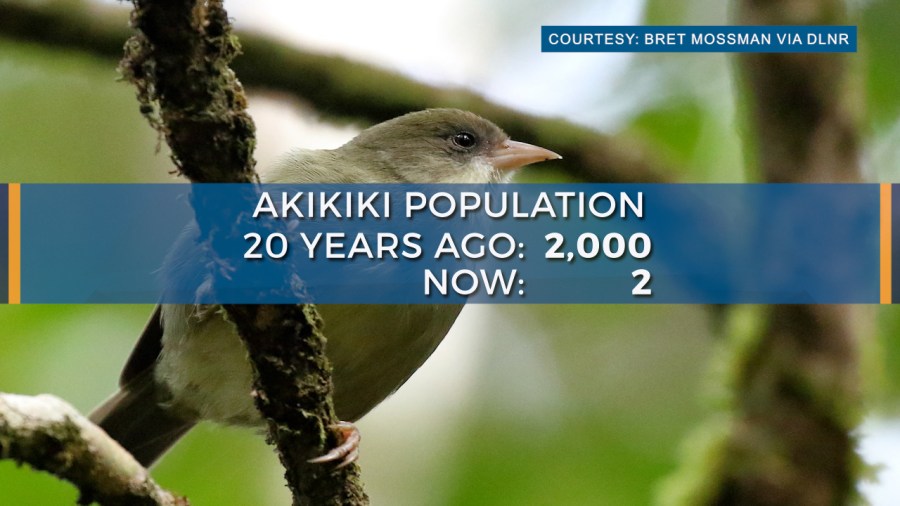HONOLULU (KHON2) — Officials are trying to give Hawaii’s native birds a lifeline through a kind of birth control for mosquitoes.
Maui has joined Kauai, where the innovative program has been underway for a year and a half.
Hawaii’s native bird species have been under assault for decades — human encroachment is an issue, but so is avian malaria. Kauai’s mosquito project coordinator said mosquitoes have decimated many native bird populations.
“I spent about a thousand nights camping in the forest up in the Alakaii,” Department of Natural Resources mosquito project coordinator Justin Hite said. “Witnessing the devastation that has been happening to these birds. Like, the state of the birds right now is nothing like it was ten years ago and just seeing that with my own eyes has been a heartbreaking.”
Hite said in the past 20 years, the Anianiau population has plummeted from 40,000 to just 4,000. It’s even worse for the Akikiki — their population crashed from 2,000 to just a couple of individuals still in the wild.
A high-tech solution on Maui and Kauai is fighting back by releasing male mosquitoes with bacteria that renders wild mosquito eggs unviable by dropping pods from helicopters.
“The delivery method is by helicopter flying around and dropping pods, biodegradable little pods that have the male mosquitoes in them,” Hite said. “And so they go off and they find the females and when they mate, the eggs just don’t hatch. And so over time the population decreases.”
Veterinarians underscored the urgency for Hawaii’s native species.
“The problem is for species that have never been exposed to avian malaria before, and so the big ones are obviously all our native birds. So, our native forest birds have never had any exposure to avian malaria,” said Feather & Fur Animal Hospital medical director Dr. Brian Walsh.
The mosquitoes that are released are all males, which has some benefits.
“The mosquitoes don’t live that long. They don’t bite people. So, I think it’s a very low risk, the, you know, venture with really great potential to, to help take out pockets of mosquitoes and try to help reduce those populations,” Dr. Walsh said.
Check out more news from around Hawaii
It is still too early to measure success, but monitoring stations on Maui and Kauai are tracking mosquito population numbers — KHON2 will follow up when they have more data.
